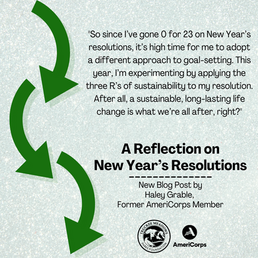What the Carp?
Happy June, readers! We’re quickly approaching the first ever Carpe Diem fishing derby at the Rosewood Nature Study Area and I for one am very excited about it. Fishing has been a very important part of my life as I referenced (link blog) in my previous blog about it, but I had never considered fishing for carp. Which made me think “what the carp is going on?” Why do people fish for carp? Why is this derby so important to the Rosewood Nature Study Area and for TMPF in general?

I don’t quite remember the first time I caught a carp but I do have a clear memory of my Grandpa Chuck calling it a “trash fish”. We were fishing at Holter reservoir, just outside of Helena, Montana, fishing for walleye. Now walleye put up a fun fight when you catch them but when I hooked a carp, I knew that I would be in for a fun time. Carp are known to put up one heck of a fight, and with some being able to reach 40lbs, a carp can definitely test any angler’s equipment and patience if they aren’t prepared for it. The grass carp that you can find at Rosewood can reach anywhere from two to three feet in length and vary in weight.
But why was it a “trash fish”? I think that my Grandpa held that opinion because we couldn’t eat them. During his life he was both a butcher and a farmer so wasting time catching something you could not eat wasn’t something he was interested in. We weren’t going to waste our time or our bait to come back empty handed. This still left me with questions though, why didn’t we eat them? Or was it something we couldn’t do? I was definitely that annoying child that needed answers for everything but was also easily redirected onto a different problem or subject but I’m ready to find out those answers today.

So why don’t we eat carp? Honestly, the fact that we don’t is unique to our part of the world. Much of it is related to all species of carp being invasive in North America. Carp just don’t belong and, maybe, our palate reflects that. According to the National Park Service, “the introduction of carp into North America happened in the mid 1800s after pressure from those who viewed the fish as a symbol of strength and courage.” The first successful carp ponds were established in California 1876, meaning Reno was around for almost a decade before the first carp in the United States! At this point in history, Americans had started trying to reverse trends that had driven several species to extinction and carp were viewed as a potential solution to the declining availability of native fish. Unfortunately, carp are really really good at reproducing, which led to them outcompeting native species in some areas and being classified as invasive.
So I realize I still haven’t answered the question that I have continued to ask, why don’t we eat carp? What makes eating carp in some places okay, but unappealing in other parts of the world? Once again according to the National Park Service, “ While tons of free-swimming carp were being harvested from area waters, they were comparable in taste to neither the selectively bred pool-cultivated carp of Europe nor, it was believed, to many of the native ‘game’ species, and were thus useless as a food source.” Carp are also notoriously difficult to clean; even the best butcher will have to work around the “Y” shaped bones throughout a filet of carp. It can be done, but the end result is something very different than what we are used to eating here in the United States.

The attitude of eating carp is beginning to shift though. In this 2018 article from the Sierra Club, a company called Fin Gourmet has been working to take this invasive species and turn it into something palatable which helps the ecosystem at the same time. The approach of making this “trash fish” into something that has been served at the White House is an incredible turn around and provides another avenue for managing carp in the United States.
While I personally won’t be eating any carp from our wetlands anytime soon, I look forward to seeing what the future holds for this invasive species. If we are able to find ways to remove carp from our waterways and use what we have harvested in a sustainable way we will take a huge step forward in restoring the health of the waterways of North America. I don’t know if I’m ready to eat carp, but if it helps us get that kind of a win, I'm willing to give it a try.
About the Author:

Matt is the Communications Manager for Truckee Meadows Parks Foundation. After serving with TMPF as an AmeriCorps VISTA in 2017 he worked to promote AmeriCorps programs throughout Nevada for four years and is excited to be back at the place that started his journey in the nonprofit world. Matt studied Radio Television Production at the University of Montana and brings over a decade of experience to the TMPF communications team. When he isn't working you can find Matt watching baseball, hiking with his family, or being pulled behind a boat.













google seo…
무료카지노 무료카지노;
03topgame 03topgame
gamesimes gamesimes;
Fortune Tiger…
Fortune Tiger…
Fortune Tiger…
EPS Machine…
EPS Machine…
seo seo
betwin betwin;
777 777;
slots slots;
Fortune Tiger…
谷歌seo优化 谷歌SEO优化+外链发布+权重提升;
代发外链 提权重点击找我;
google留痕 google留痕;
Fortune Tiger Fortune Tiger;
Fortune Tiger Fortune Tiger;
Fortune Tiger Slots Fortune…
站群/ 站群;
万事达U卡办理 万事达U卡办理;
VISA银联U卡办理 VISA银联U卡办理;
U卡办理 U卡办理;
万事达U卡办理 万事达U卡办理;
VISA银联U卡办理 VISA银联U卡办理;
U卡办理 U卡办理;
온라인 슬롯 온라인 슬롯;
온라인카지노 온라인카지노;
바카라사이트 바카라사이트;
EPS Machine EPS Machine;
EPS Machine EPS Machine;
EPS Machine EPS Machine;
Yapsody is one of the fastest growing online ticketing software with a rapidly growing user base.